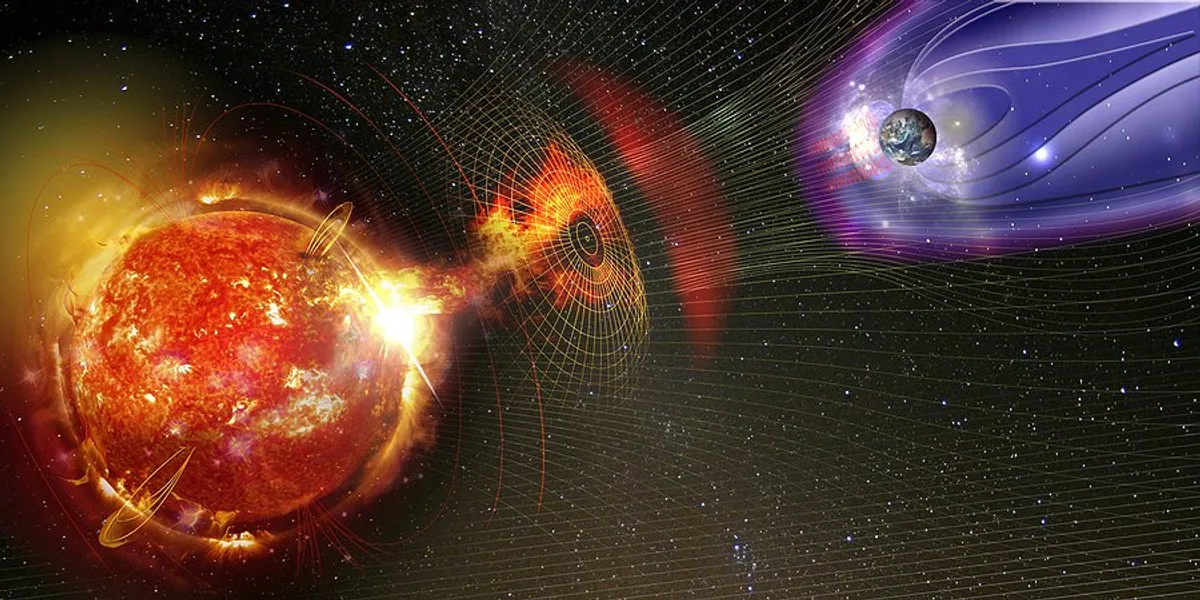Solar Storms

- 15 May 2024
Why is it in the News?
According to the Indian Space Research Organisation (ISRO), Indian satellites did not suffer any major outages due to the multiple powerful earth-bound solar storms recently.
What is a Solar Storm?
- Solar storms are a normal part of our Sun's solar cycle.
- It occurs when the Sun emits huge bursts of energy in the form of solar flares and coronal mass ejections.
- These phenomena send a stream of electrical charges and magnetic fields toward the Earth at a speed of about three million miles per hour.
- When a solar storm strikes the Earth, it often produces a dazzling “northern lights" display in parts of the atmosphere that can be seen in areas close to the Arctic Circle.
- Solar storms start with a huge explosion on the Sun.
- These explosions — called solar flares — can be about as powerful as billions of nuclear bombs!
- Solar flares usually go hand-in-hand with the release of huge streams of charged plasma that travel at millions of miles per hour.
- These streams are called coronal mass ejections, or CMEs.
- When CMEs hit the Earth, they can cause geomagnetic storms that disrupt satellites and electrical power grids.
- For example, in 2017 two massive solar flares fired out from the surface of the Sun disrupted devices such as GPS navigation systems on Earth.
How often do solar storms happen?
- Scientists who study solar storms have discovered that the frequency of solar flares appears to follow an 11-year solar cycle.
- At times of peak activity, there could be several solar storms each day.
- At other times, there might be less than one solar storm per week.
What is the Impact of Solar Storm?
- It majorly interferes with several services, including GPS navigation, weather forecasting, communication, and other satellite-dependent services.
- Besides that, it also has a significant impact on satellite networks and communication.
- They can create geomagnetically induced currents (GICs), which can overload electrical systems and cause damage to transformers, issues with voltage regulation, and widespread power outages.
- Furthermore, because solar storms increase the amount of solar and cosmic radiation that reaches the top regions of Earth's atmosphere, they also pose health concerns to people, especially aircraft crew and passengers, especially on flights at high latitudes.
- These storms have the potential to disrupt infrastructure in near-Earth orbit and on Earth's surface, affecting communications, the electric power grid, navigation, radio, and satellite operations.
